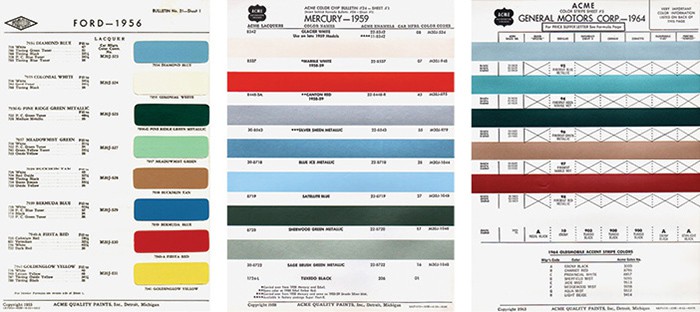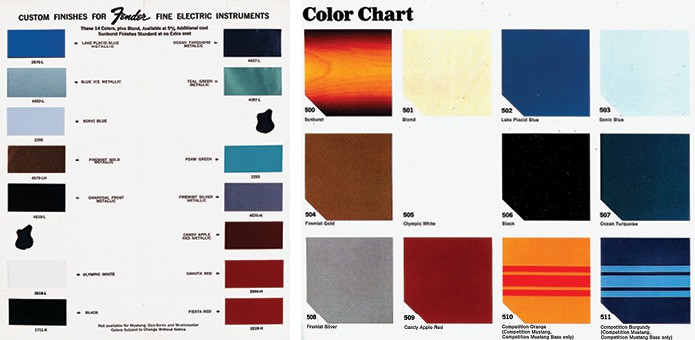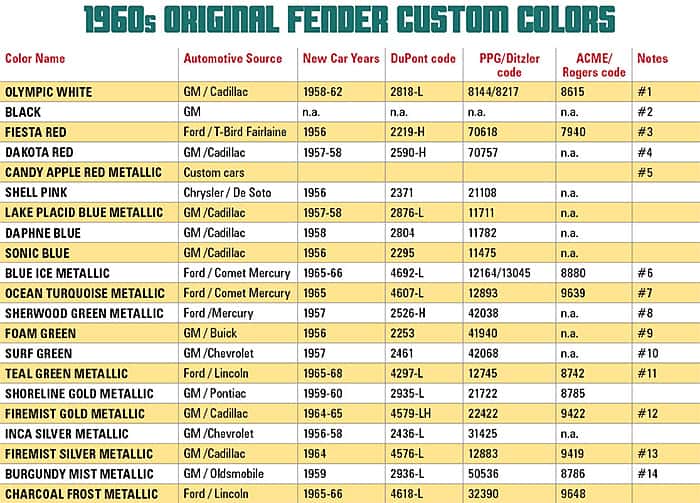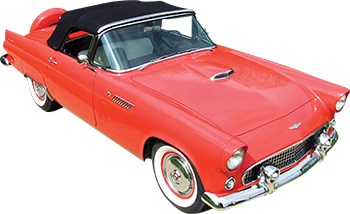
In the 1950s, America’s fascination with the car skyrocketed, largely due to the booming economy of the postwar years in the country. As a result, car manufacturers began offering their products with increasingly better finishes. Beyond the luxurious interiors, switches and buttons, one of the key elements of the surge in the popularity of the car was its painting. Competing manufacturers to offer a wide range of colors available.
The guitar makers took advantage of that pull to capitalize on the cult of the car (and its many colors). What better way to make the electric guitar an object of similar desire, symbolizing the beginning of a new era of freedom and innovation?
Regardless of the reason, custom colors are nowadays an essential (and sometimes highly valued) feature of many classical instruments, although their origins are not always properly documented.
From a guitarist’s point of view, a “custom” finish does not necessarily mean a colorful finish, but a non-standard finish on a given model. For example, in the 50s, the blonde finish was standard on Fender’s Telecaster and Esquire, but it became a custom option on the Stratocaster (in which the normal finish was Sunburst). Any finish may or may not be customized, depending on the brand / model. In 1952, Les Paul’s Gold finish was standard in Gibson, but to obtain one in a Telecaster it would have to be done on demand.

Custom color finishes appeared on Fender instruments long before the company’s first color chart was published in 1960. The possibility of having a DuPont Ducco color at the buyer’s choice at an additional cost of 5% “appeared by First time on the Stratocaster and Precision Bass spec sheets around ’56, but customer requests for non-standard finishes actually date back to the early 50s.
The custom colors used by Fender came from the automotive industry for three main reasons: there were many shades to choose from, since the colors were a strong selling argument to differentiate cars long before it was also imposed on guitars; car paints adapted well to an industrial environment, were easy to apply and dried quickly; and finally, they were easy to get.
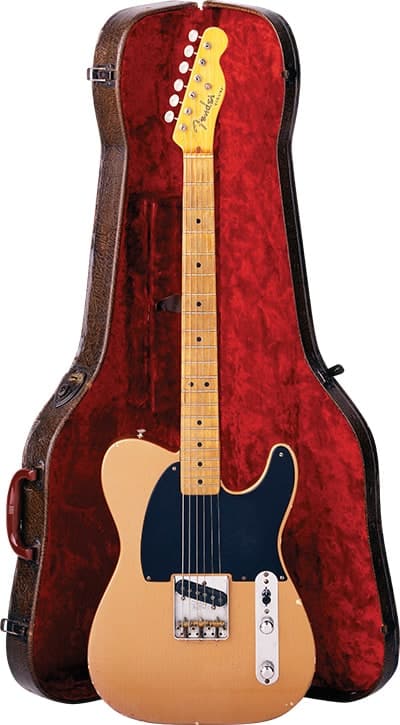
It is difficult to identify precisely what colors were used on Fender instruments before 1960, partly because of the large number of car paint colors available at that time, but also because of the effect of aging on these colors. It is also impossible to determine if a customer specifically required a certain color or if it was actually chosen by Fender to match a request for, for example, a red or green guitar. The company was willing to differentiate itself from its competitors by using unusual finishes on guitars, as evidenced by Eldon Shamblin’s ’54 gold stratocaster, Pee Wee Crayton’s red or the colorful Precision Bass models displayed in ’55. That said, Fender instruments with a genuine custom color finish other than the Blonde remained quite rare in the 50s.
In 1960, the first year Fender published a color chart, he restricted the number of factory available colors to 14 shades (plus the Blonde). The graphic was modified in ’63, when Candy Apple Red replaced Shell Pink, and again in ’65, when six new metallic tones were included. The company took the trouble to specify the actual paint code of each color as referenced by its preferred supplier, DuPont, although the same car paints were actually available from other suppliers such as PPG / Ditzler or ACME / Rogers.
Black aside, Fender’s 1960 color chart reflects a strong trend toward GM, with 10 colors of 13, and particularly Cadillac, with five colors. In ’65, this trend was somewhat mitigated, as four new metallic colors came from Ford, but Cadillac continued to reign with six. No one can say whether the selection of colors was based on the choices of previous customers or on Fender’s own preferences.
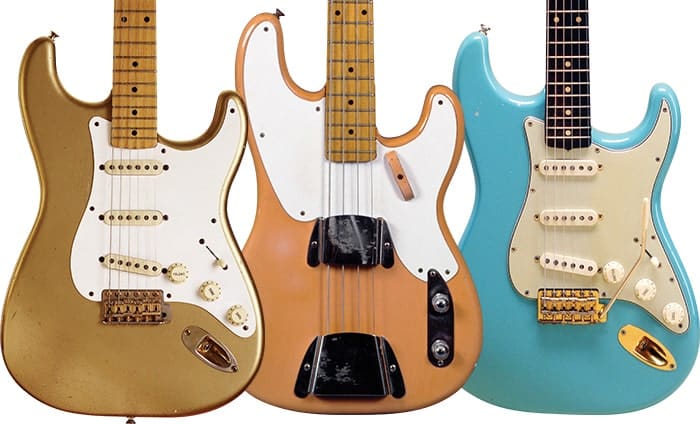
When the first graphic was published in 1960, only Olympic White and Shoreline Gold were still offered in new cars. Car manufacturers frequently change their name, but without necessarily altering their color significantly. For example, the 1957 Lake Placid de Cadillac blue is not so different from the Georgia blue, which replaced it in ’59, or the Pelham blue, which happened in ’60.
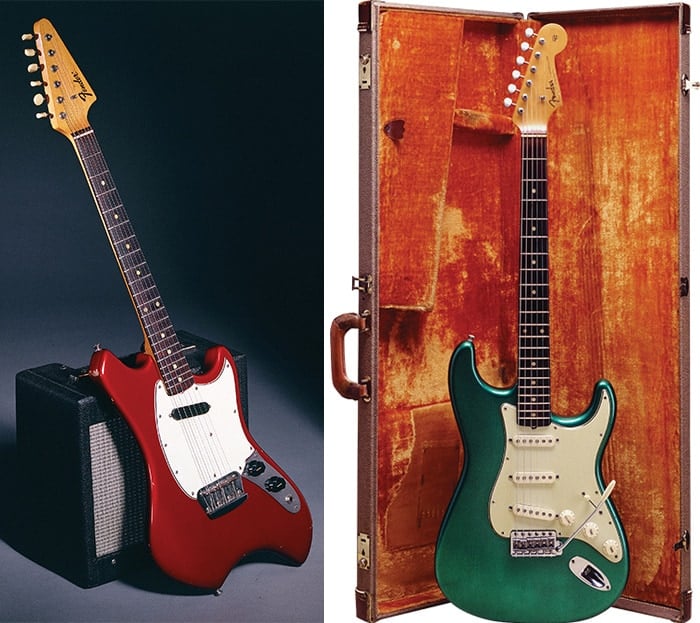
The cult of some of these paintings in today’s guitar realm is an interesting paradox given the programmed obsolescence incorporated into most industrial companies, including, of course, the automotive industry. Whether for commercial and / or industrial reasons, Fender began reducing his choice of colors in ’69, when six were abandoned, including old classics such as Fiesta Red, Dakota Red and Foam Green.
In 72, four more were eliminated as natural finishing instruments became increasingly fashionable. It would be about a decade before the introduction of vintage reissues revived fashion and propel custom colors to unprecedented levels. Below are the original fender color charts and letters from the car companies of the time.
